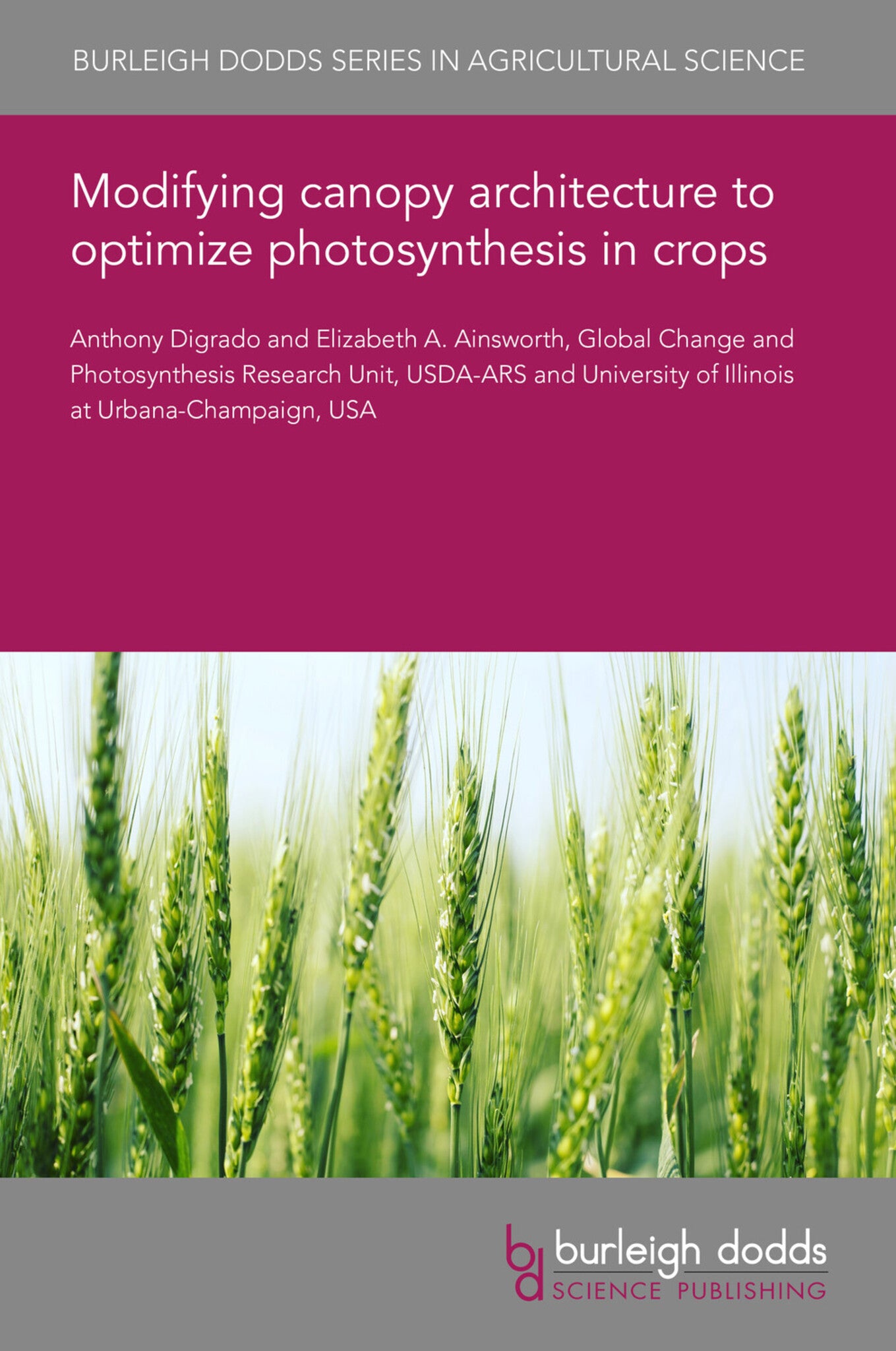We're sorry. An error has occurred
Please cancel or retry.
Modifying canopy architecture to optimize photosynthesis in crops

Some error occured while loading the Quick View. Please close the Quick View and try reloading the page.
Couldn't load pickup availability
- Format:
-
09 January 2023

Canopy architecture is described by the quantity and three-dimensional display of leaves in a crop canopy, which determines light interception and subsequent canopy photosynthesis. While many crop canopies were reshaped by selection during the Green Revolution, there is further opportunity for improvement of the light environment within crop canopies and the canopy light use efficiency in modern crops is modeled to be sub-optimal. Thus, there is growing interest in understanding how the canopy architecture affects the light environment, canopy carbon assimilation and transpiration, and ultimately yield. In this chapter, we review how light is modeled within crop canopies, describe how selection has altered crop canopies, and describe opportunities to improve architectural features of the canopy to improve radiation use efficiency. Finally, we discuss considerations for the adoption of canopies better suited to their environment and management practices.

TECHNOLOGY & ENGINEERING / Agriculture / Agronomy / Crop Science, Plant biology, TECHNOLOGY & ENGINEERING / Agriculture / Sustainable Agriculture, Agronomy and crop production, Sustainable agriculture, Agricultural science

- 1 Introduction
- 2 Modeling light within crop canopies
- 3 Impacts of breeding on modern crop canopy architecture
- 4 Potential targets for canopy improvement
- 5 Canopies under different environments
- 6 Conclusion
- 7 Future trends in research
- 8 Acknowledegements
- 9 Appendix
- 10 References



